AAC PROGRAMS
AAC (MPEG2-AAC) is an encoding scheme designed to
give the highest audio quality in smallest filesize / bitrate.
AAC uses a complex enoding algorithm to achieve this and
it has been refined since the first source code was released
(in november 97).
So far we have seen several versions of AAC and its quite
confusing. I think that ISO-compliance is the main factor in
establishing a common platform for AAC development.
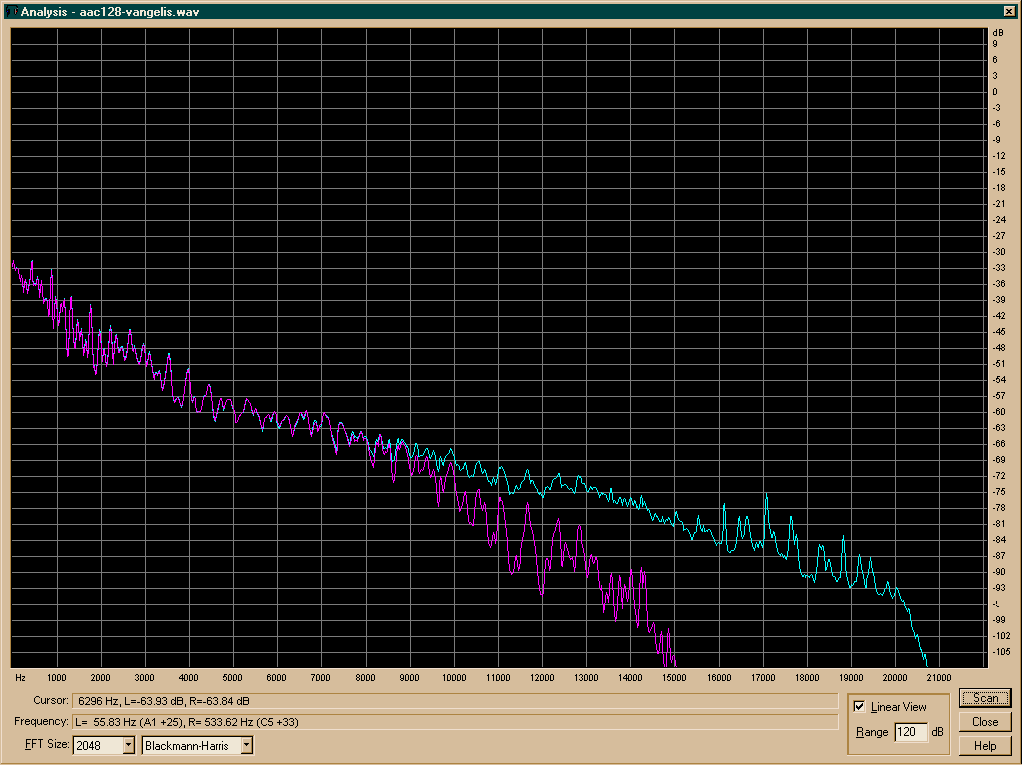 A legal AAC encoder requires licensing from Dolby, of the
A legal AAC encoder requires licensing from Dolby, of the
mentioned ones only Liquifier is licensed at present.
HOMEBOY AAC. (ISO compliant - lo quality)
The first public AAC encoder was the Homeboy AAC encoder,
it worked but wasnt very good sound quality and not fast
either (real slow actually).
For some time there were no AAC player available (hmm) ,
but when BitAAC came out it was possible to play the AAC
files. There is also a Winamp PLUG-IN from Homeboy.
homeboy aacenc - 128 kbps
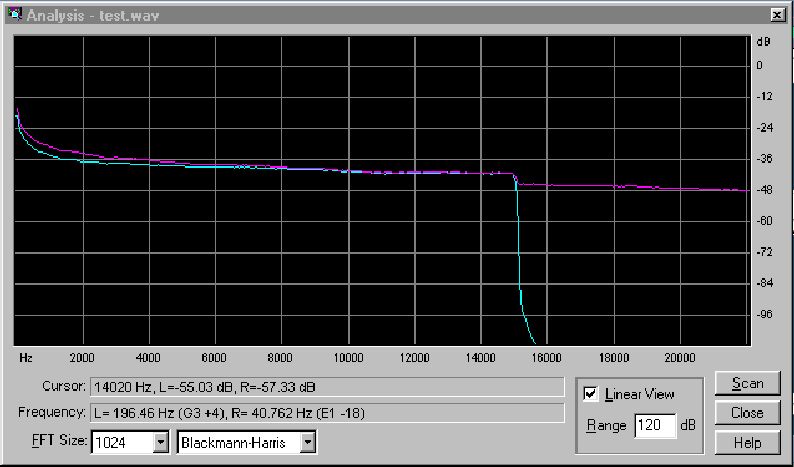 PsyTEL AAC. (ISO compliant - lo quality)
PsyTEL AAC. (ISO compliant - lo quality)
A newly released AAC encoder, Psytel AAC is quite similar
to Homeboy AAC, but better sound quality though.
The encoding speed is slow and it also uses "dummy" modules
like the HB, which gives low sound quality (of course).
This AAC encoder seems to be in development and it shall be
interesting to follow. There seems to be some confusion with
what player to use as some of the other "ISO-compliant" players
wont play the files.
psytel aacenc - 128 kbps
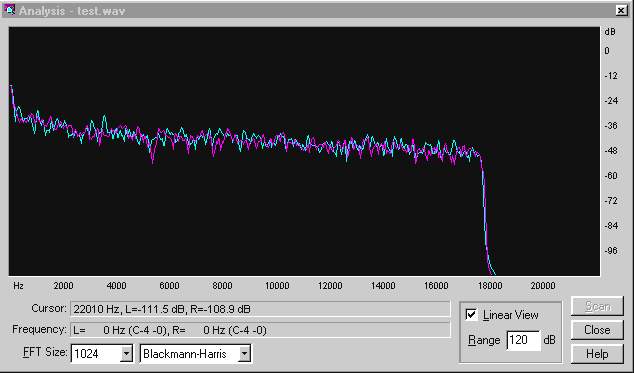
ASTRID/QUARTEX AAC. (non ISO-compliant - better quality)
A new AAC encoder, Astrid/Quartex was released in october 98
and it was based on AAC/MP4 source from NTT (creator of TwinVQ).
The sound quality was much better but it was still kind of slow.
Kjofol 04/05 was the only player for these AAC files (non ISO
compliant) and in november 98 development of Atrid/Quartex stopped.
Astrid 02 has a good frequency response to 18 kHz.
astrid/quartex 02 - 128 kbps
K+K AAC. New AAC PROJECT (ISO-compliant - high quality)
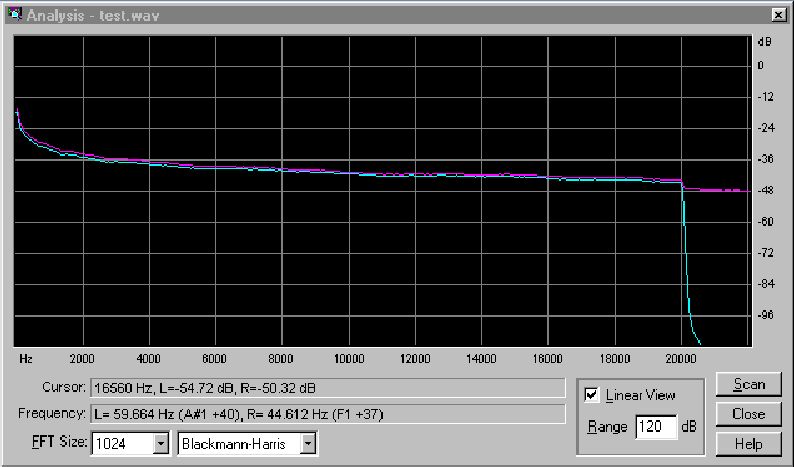 I am delighted to present a new high-quality AAC software package.
I am delighted to present a new high-quality AAC software package.
I am involved in development and we call it K+K AAC.
So far we have a full ISO-compliant AAC encoder with better sound
quality than Astrid/Quartex, we have an AAC decoder and we have
an AAC plug-in for Winamp (the most populat MP3/multiformat player).
All 3 AAC profiles are supported (Main, LC and SSR) and this encoder
has a very good frequency response to over 20 kHz.
Recent listening tests has shown that K+K AAC is somewhat better than
Liquifier Pro (with Fraunhofer AAC) and also that AAC files (in 128 kbps)
K+K AAC 10 - 128 kbps
is full CD/wav quality, actually they were on several occasions asumed
to be the wav original because of its better sound quality (!).
One may ask what software the MPEG listenings tests were made with
and if this can be improved even further.
LIQUIFIER PRO. (Non ISO-compliant - high quality)
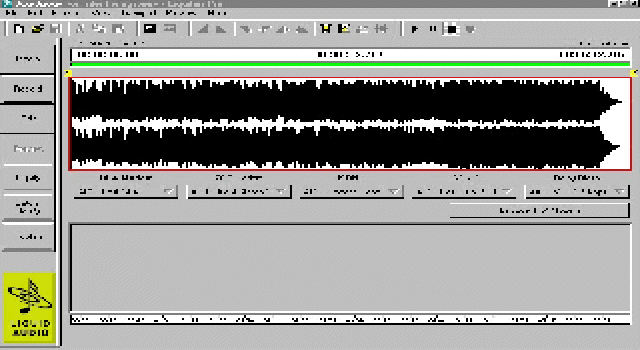 Liquid Audio is using AAC (and Dolby AC3) technology in their web-
Liquid Audio is using AAC (and Dolby AC3) technology in their web-
music distribution program; Liquifier Pro 4.0
I have worked as a beta-tester for this program and thus I have a
very good reference for judging AAC encoders (and other audio
compression).
With its fully optimized AAC encoding Liquifier is "the real thing"
but our project (K+K AAC) is better sound quality.
You can find more, detailed information about AAC here ;
Liquifier Pro 04
AAC TECHNOLOGY
MPEG-2 AAC (Advanced Audio Coding) is the latest MPEG standard on perceptual
audio coding. It is an extension of existing standards towards optimum coding
efficiency. AAC is not compatible with MPEG Audio Layers 1, 2, 3, that's why AAC
was called NBC (Non Backwards Compatible).
There are three AAC profiles
• Main
• Low Complexity (LC)
• Scaleable Sampling Rate (SSR)
The Main profile includes all tools available and delivers the best audio quality
of the three profiles. The LC (low complexity) profile comes along with a limited
Temporal Noise Shaping tool and without prediction. This reduces audio quality for
some special audio signals but saves a lot of computational power in both encoding
and especially decoding. The SSR profile (Scaleable Sampling Rate) is a low complexity
profile with a different filterbank and a special gain control tool.
AAC has sampling frequencies between 8 kHz and 96 kHz and any number of channels
between 1 and 48, the AAC is well prepared for future developments in the audio
and cinema sectors.
Like all perceptual coding schemes, MPEG-2 AAC basically makes use of the signal
masking properties of the human ear in order to reduce the amount of data.
The AAC uses these techniques
• Huffman Coding
• Quantization and scaling
• M/S Matrixing
• Intensity Stereo
• Coupling Channel
• Backward adaptive prediction
• Temporal noise shaping (TNS)
• Modified discrete cosine transform (IMDCT)
• Gain control and hybrid filter bank (polyphase quadrature filter + IMDCT)
AAC Main 128, gives significantly better performance than MP2-192 or MP3-128.
In addition, AAC Main 96 gives better performance than MP3 128. These comparisons
are only tru for fully optimized AAC.
The AAC Main 128 was indistinguishable from the original for 80% of professional
listeners (in tests performed by Mpeg organization).
We have repeated these tests and can confirm it, actually we think that the figure
is over 90%
The compression ratio is around a factor of 2 better compared to MPEG Layer 2 and
still a factor of around 1.4 better than MPEG Layer 3 (MP3). This means that
compared to Layer 3, you get the same quality (better actually) at 70% of the bitrate.
You need a Pentium PC 90MHz or above to decode MPEG-2 AAC in realtime, and encoding
time is like 4 times track length on a P2-300.
MPEG-2 AAC is the Data Compression for the 21st Century and AAC shall be incorporated
(with Twin VQ) in MP4.
MP4 AAC shall be similar to MPEG2-AAC and a MP4 player shall play AAC files. In addition
MP4 shall incorporate features to improve lower bitrates, to adapt to various bitrates
(multi-bitrates) and facilitate better streaming in lower bitrates also.

For comments etc. you are welcome to send me an email;
 A legal AAC encoder requires licensing from Dolby, of the
A legal AAC encoder requires licensing from Dolby, of the PsyTEL AAC. (ISO compliant - lo quality)
PsyTEL AAC. (ISO compliant - lo quality)
 I am delighted to present a new high-quality AAC software package.
I am delighted to present a new high-quality AAC software package. Liquid Audio is using AAC (and Dolby AC3) technology in their web-
Liquid Audio is using AAC (and Dolby AC3) technology in their web-